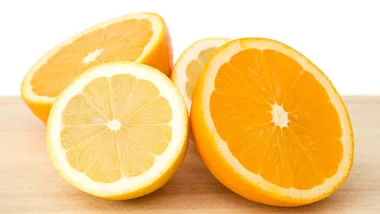In old gardens- ones planted at least thirty years ago- you’ll often find a strange tall tree, with big leathery leaves and clumps of round orange fruit each spring, much loved by birds and flying foxes.
Often new owners will cut the tree down and plant a nice gaudy azalea in its place, or at least ignore it, because they’ve never seen any fruit like that in white Styrofoam trays at the supermarket.
This is sad, because those big dull crinkly leaves are sheltering one of the easiest fruit in the world to grow, and a delicious one- if you know how to use them. What are they? They’re loquats.
Loquats are one of the early spring fruits, like strawberries, raspberries, strawberry guavas and mulberries. Old varieties of loquat have big stones and not much flesh, and the skin is a bit tough, too. You don’t need to peel a loquat, but it will be nicer if you do- and even peeled it won’t be one of the old fashioned varieties nearly as succulent as a cherry. But new loquat varieties are both sweeter and softer, with smaller seeds too, and are tastier too. While old varieties are best made into jam or chutney or fruit sauce (or guzzled by kids when they climb the trees- loquat trees make perfect cubby trees) new varieties are good eaten fresh, or chopped into fruit salads.
You don’t see loquats for sale often because they don’t travel well. Loquats look sturdy, but they bruise easily. And even a fresh loquat looks like a bit like an apricot that forgot to grow up; a shrivelled elderly one looks like it was left over from the cretaceous, and was never meant to be eaten by humans at all.
I spent part of my childhood up a loquat tree (most of the rest was spent up the mulberry tree). I used to eat the loquat fruits because they were there, though it was fun to throw them down on the boy next door too.
A loquat is also probably the easiest fruit tree in the world to grow. (This is probably why they were growing at our place) There’s no pruning, feeding or tending needed once the trees are growing strongly- just make sure you pick all the fruit – or encourage the birds to finish the job – so you don’t have a heap of festering fruit to attract fruit fly. As birds love loquats this is rarely much of a problem. Possums love loquats too. In fact if you want to save your rose buds from possums, plant a loquat tree. The possums will concentrate on the fruit in spring, and the new leaves too, and leaves your roses alone- well, mostly, anyhow.
The easiest way to get a loquat tree is to buy a grafted one; otherwise plant a loquat seed if you’re prepared to wait 10 years or more for the fruits. A grafted variety should fruit in four years.
Dig a hole in a sunny spot (or even in dappled shade). The hole should be twice as large as the pot that holds the loquat tree. Tease the roots out gently, firm down the soil around the tree, and then slowly give about two buckets of water to settle the dirt firmly against all the roots. Now give your tree half bucket of water a week for the first two years, and a scatter of good fertiliser each spring. Mulch the tree, too, but don’t let the mulch touch the trunk in case it encourages fungi to attack the bark.
After two years or so you can forget about the watering and mulching. Just wait for the fruit. Even in the worst of drought years, you’ll almost certainly get some- or the possums will, if you don’t pick it first.
If you want to eat loquats fresh, peel off the skin, gobble the fruit and spit out the seeds. (We used to see who could spit the seeds the furthest, but you prefer not to pass this old fashioned game onto your kids.)
Other easy to grow spring fruit
Strawberry guava
These are the size of a cherry, sweetly fragrant- and the tree is just as tough as a loquat. Like loquats, too, strawberry guavas will grow in just about any garden in Australia. Strawberry guava make great jam, but despite the fact they should be yummy somehow I never bother eating more than one or two as I pass the tree. But the jam is superb.
Mulberries
This is another good tree for any garden, tolerating Hobart frost and Darwin’s heat, and surviving drought too- though in very dry years you won’t get a crop unless you can spare the tree some water. The leaves turn a deep rich yellow in autumn in cold climates, but won’t put on a show in hotter areas.
Don’t be put off if you’ve only eaten watery tasteless mulberries. A good variety will give you a stunning rich blue back fruit, as superb as any bowl of cherries- or even better. The only real downside of a mulberry tree is the purple strains on clothes and fingers- and washing lines if you plant a tree too close to the laundry. You can overcome this by planting a white mulberry- not quite as fragrant (I find them a bit too sweet, too). But they are still better than no mulberries at all.
Loquat jam or sauce
This is excellent- a thick, rich jam full of flavour as well as sweetness that cries out for scones and cream. Loquats have a strong, pervasive fragrance and really make a far better jam than milder flavoured peaches, apricots or berries.
Ingredients:
1 kg loquats, seeds removed but not peeled
200 ml water
Finely grated rind (optional) and juice of 2 lemons
Simmer fruit in water till soft. Mash well. Add juice and rind and sugar; boil rapidly till a little sets on a cold saucer. Bottle and seal.
If you’d prefer loquat sauce to eat with icecream , take it off the stove about 5 minutes after you’ve added the sugar. Again, bottle, but while the jam goes in the cupboard keep the runny sauce in the fridge.
Mulberry or Strawberry Guava jam
As above, but substitute mulberries or guavas for the loquats. There is no need to peel strawberry guavas, or to take out the tiny stones, but do remove the stems of the mulberries before cooking.



